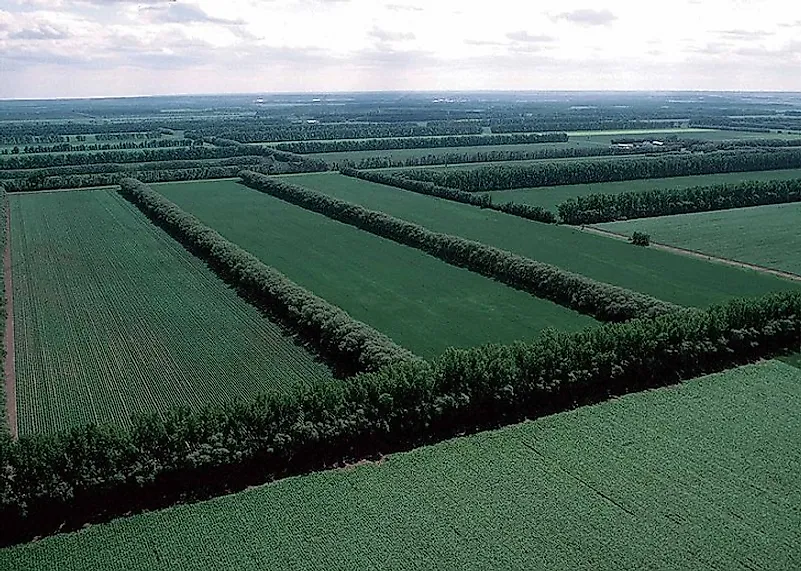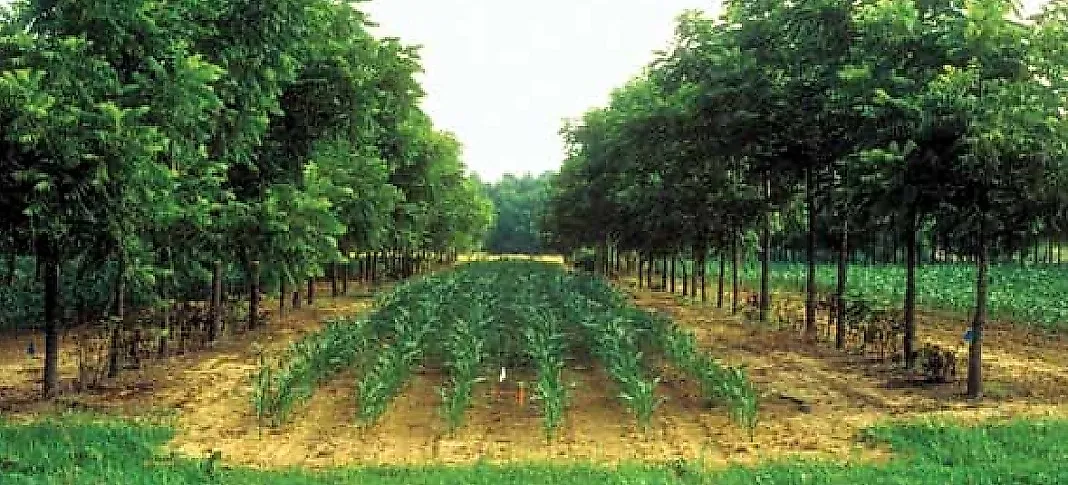Windbreaks And Shelterbelts: Wind Erosion Control In Farming

5. Windbreaks and Shelterbelts
The Windbreak, alternatively known as the Shelter-belt, is a method related to the planting of trees along agricultural fields in such a manner as to protect soil from erosion from around crops, and to give them shelter from the wind. It also helps the snow from drifting into livestock pastures and cultivated plots, and is a good source of habitat for local wildlife. It can also be used to harvest wood products. The shelter-belt also provides a kind of safe barrier between the farm animals and vehicles that are being driven on nearby motorways. It is also seen that if the windbreaks are designed in a careful manner then it can reduce the cost of cooling and heating and is also used for saving energy.
4. Importance of Erosion Control
Windbreaks play an important role in warding off and controlling erosion, as the design of shelter-belts provides a means of protection for the crops against the wind speed and shelter on both their windward and their leeward sides. The benefit of erosion control is that it helps in decreasing the speed or the momentum of the wind, it provides armor to the surface of the soil so as to prevent soil particles from being lifted away. It protects the agricultural fields and the areas which are protected by the shelter-belts. The other important role played by these shelter-belts is that spacing for the trees and shrubs on the land helps in reduction of the wind velocity, helps in increasing the crop yield by some 10% in the area, improvement is seen in the irrigation efficiency, and much more.
3. Synthetic Wind Fences
The synthetic wind fences are usually made up of canvas, cotton, recycled sails, and nylon which may also act as windbreaks. They have some three or more panels which are held in place with the help of poles that slide into the pockets which are sewn into the panels. This also helps in the reduction of wind speed over the areas which are erosion-effected, like open farms, dusty industry operations, and industrial stockpiles. They also reduce the amount of crashing down and damage inside by letting lower amounts of wind flow in.
2. Alley Cropping

This term is used to refer to a combination of windbreaks and inter-cropping in sustainable farming practices. Called Alley Cropping, in this method different crops are planted in distinct rows, and they are surrounded by the number of trees. This type of cropping is successful in Africa, India, and Brazil, where the coffee growers have especially mixed the farming and the forestry practices. This agricultural crop is also grown alongside a long-term tree crop so as to contribute another source for farmers' annual incomes. Pictured above, corn is being grown between rows of walnut trees in the United States.
1. Where Are They Used?
Windbreaks and Shelter-belts are mainly used in the areas which are the edges of the fields or the trees are planted along the structures. If they are properly constructed, then they are advantageous for the wildlife and the people living around the particular areas they are employed. They are also planted in the exposed gardens where the velocity of the wind is high, and they provide a shelter for large plantation crops to grow as well.











